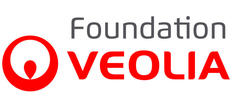Technical Studies and Projects Engineer, Paul Sagot, has hastily left for Uganda for a mission of a few weeks. The goal: to deploy Saniforce, the fecal sludge treatment solution designed by the Veolia Foundation for humanitarian aid, in a refugee camp.
Your mission was decided in a few hours and you left in three days. Tell us about it.
Paul Sagot: The mission was planned, but with another Veoliaforce volunteer who ultimately couldn’t free themselves up. When the team from the Foundation called me to ask if I could leave the day after next, I didn’t even know where Uganda was on a map! But I was able to grab my bag and go. Within Veolia Water, my department's organization was able to compensate for my absence and, for some areas, we explained to our clients that some deadlines would be pushed back. They were understanding. And at the management level, Guillaume Thibault, my territorial director, gave me his consent after ensuring the continuity of the department's missions.
What was the context of the mission?
PS: I went on a sanitation issue in a refugee camp in the West of Uganda. Having never experienced this situation, I was expecting to sleep in a tin shack, similar to what you might see in the media. But in Kyangwali where we were, tens of thousands of people have settled, sometimes for several years. A life has been built around these gradually established habitats. We, on the other hand, were lodged in a standard hotel near the camp from where we left each morning to go to the site.
Your mission was to deploy the Saniforce...
PS: ...except that it didn't arrive until several days after us! So we prepared the ground for its deployment, checked the facilities, and mobilized the team, made up of refugees who had become volunteers with the Uganda Red Cross. There was a real challenge in mobilizing these people while waiting for the Saniforce, dealing with the difficulty of multiculturalism: some spoke French, English, others local languages. We adapted in order to keep the collective energy and enthusiasm for deploying a new tool intact.
And when the Saniforce arrived?
PS: The solution is impressive! It's "plug-and-play", with of course improvements to be made to perfect the device, but there's a real opportunity there. We could really sense the interest of the humanitarian workers on the subject: many came to visit the site.
You were on the ground with two other experts. How did you divide the tasks?
PS: Romain Verchère, a permanent member of the Foundation in charge of the innovation program, organized the deployment of the Saniforce with all the local partners. Gabriel David, a Brazilian academic writing a thesis on the Saniforce, focused on data collection, particularly analyzing the heating times of the pasteurizer. On my part, I worked on all the stages of treatment to optimize certain aspects and validate their start-up. Every day, we face operational issues which, in the end, are also opportunities. They have allowed us to train, during the mission, employees of the Ugandan Red Cross in solving common problems. The most difficult part is working in a context where you have nothing. At the slightest missing bolt, you have to find solutions either to get supplies several hours travel away, or to circumvent the problem. In short, it involves a lot of resourcefulness, but that suits me well.
How do you handle the return from such a mission?
PS: On a development project for a new solution like the Saniforce, it's hard to lose interest in the subject once you're back. On site, it was already very frustrating, every evening, to leave the site when we were seeing progress day by day, even hour by hour. Back home, I went straight back on call at work. But I'm still very tuned in to what's being done with the Ugandan Red Cross in Kyangwali. Because I'm sure of it: we're going to hear more about the Saniforce!
Saniforce, a low-carbon solution for treating fecal sludge in humanitarian contexts
Saniforce aims to facilitate the treatment of septic tank and latrine pit contents for 500 people. Its objectives are sanitary and environmental, preventing the contamination of the environment and water resources. Technically, the device relies on anaerobic digestion and thermal pasteurization processes to eliminate pathogens. This controlled process of biological decomposition of organic matter contained in the sludge takes place without oxygen and generates both biogas, convertible into energy, and a valuable effluent called digestate.
Partnership with the Polytechnic School of the University of Sao Paulo (Brazil)
Saniforce is at the heart of an agreement signed by the Veolia Foundation with the Brazilian University of Sao Paulo, and more specifically its Polytechnic School. One of its engineering students is dedicating his master's thesis to the engineering developed to create Saniforce. He collects and compiles data from the pilot program installed in the Kyangwali camp. The goal: to measure the impact of using solar energy or biogas on the heating times of the pasteurizer and on the elimination of pathogens.
What is Veoliaforce skills sponsorship?
An employee from the Veolia Group goes on a mission during their working hours on behalf of the Veolia Foundation. Having been previously trained in humanitarian emergencies and the handling of intervention equipment designed by the Foundation, they can be on the ground for several weeks or provide their expertise remotely. The Foundation coordinates and takes care of logistics and travel expenses; the volunteer continues to be paid as if they were performing their regular job.







